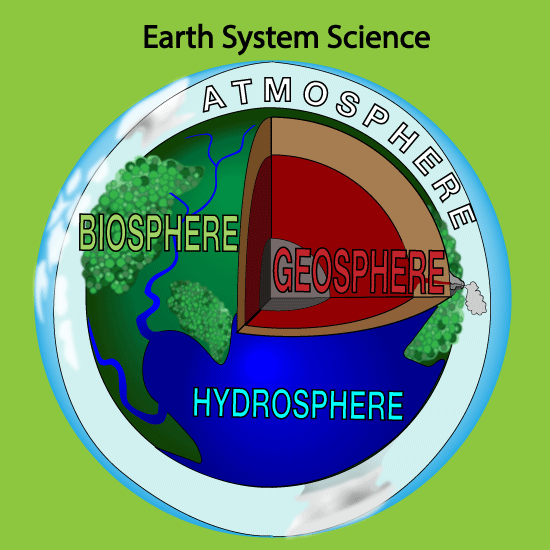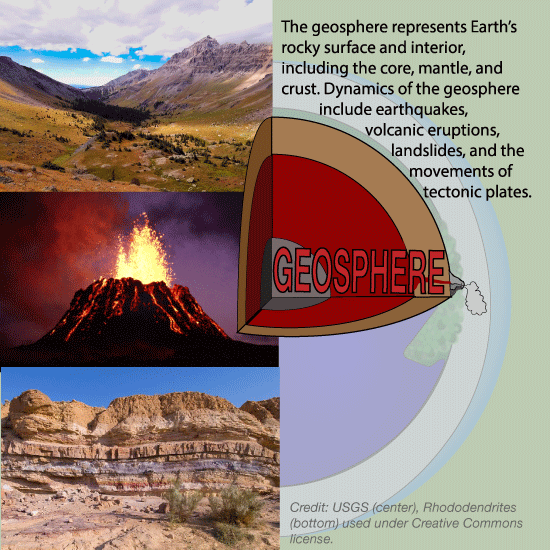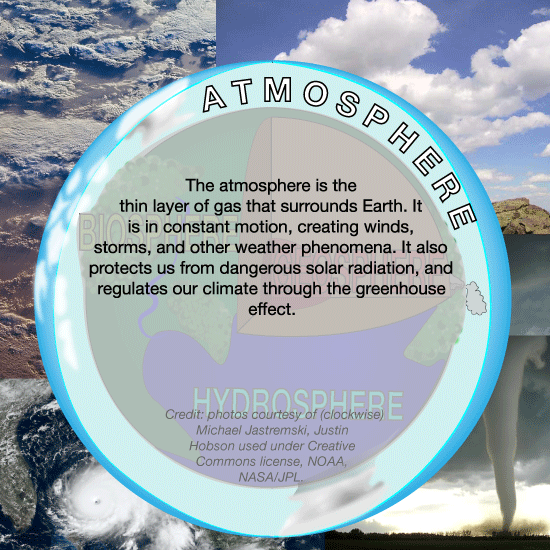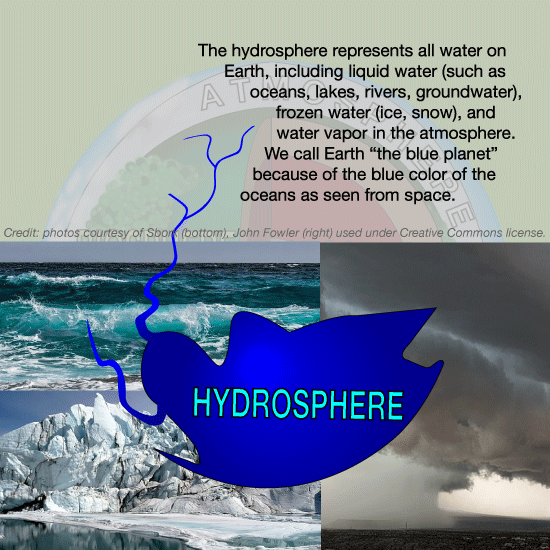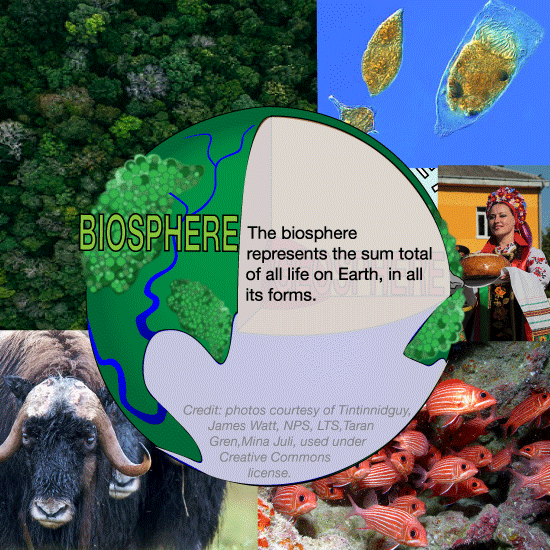This chapter covers everything in the NGSS (middle school) relating to modeling of Earth’s atmospheric and ocean systems, including understanding air pressure, details of the water cycle, and the drivers of wind and ocean currents (covered in Section 6.2). Note, however, that if you wish to focus exclusively on weather and climate, it is possible to skip directly to Section 6.3, where these topics are covered. Of course, students will get a deeper understanding of these topics if they have already covered the material in Sections 6.1 and 6.2.

Back in Section 4.2, we introduced the Earth systems science approach of looking at our planet as a set of four “spheres”: The geosphere , the hydrosphere , the atmosphere , and the biosphere (see Slide Show 4.29, repeated below).
Repeat of Slide Show 4.29
We have already studied the geosphere in some depth in Chapter 5, and you learned (or will learn) about the biosphere in life science, but we have not yet gone into depth about the atmosphere or hydrosphere. In this first section of Chapter 6, we’ll look at each of these systems in more detail, and also look more deeply at how they interact through the water cycle.
Section Learning Goals
By the end of this section, you should be able to answer the following questions:
- What exactly is the atmosphere?
- How is water distributed on Earth?
- How does water cycle through the hydrosphere and atmosphere?
Before you continue, take a few minutes to discuss the above Learning Goal questions in small groups or as a class. For example, you might discuss what (if anything) you already know about the answers to these questions; what you think you’ll need to learn in order to be able to answer the questions; and whether there are any aspects of the questions, or other related questions, that you are particularly interested in.
Journal Entry
Atmosphere, Hydrosphere, and Me
We all know that we need water to drink and air to breathe, but the atmosphere and hydrosphere are important to us in many other ways as well. In your journal, write today’s date and make a list of as many ways as you can think of that the atmosphere and hydrosphere are important to your life. Then, as you study this chapter, add to the list whenever you come up with a new way you hadn’t thought of at first, including the date on which you add each list item.
This journal entry gives students a chance to start thinking about all the ways in which the atmosphere and hydrosphere are important to us. Note that you could also make a class discussion out of this topic, but the journal entry has the advantage of ensuring that each student thinks about these issues individually. There are far too many possible answers for us to list them all, but a few notes:
- Students should think both about local and global effects of the atmosphere and hydrosphere.
- Local effects might include, for example, their roles in food production, energy generation, etc.
- Global effects could include those same things, along with many more, such as creating atmospheric pressure, protection from the vacuum and radiation of space, generating weather, moderating climate, etc.
- Be sure to note the suggestion of adding to the list as students work through the chapter. If you want students to do this, you will need to give them reminders at various points, such as after each section or subsection. Note that the chapter also includes a final journal entry (at the end of the last section) to give students an opportunity to revisit this entry.
